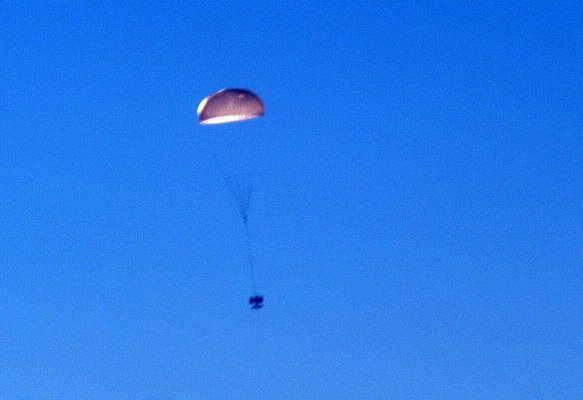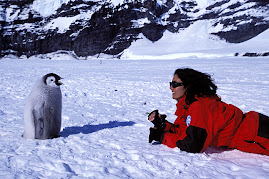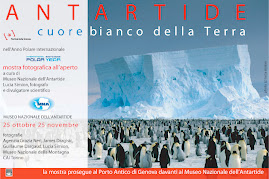
Maybe, the Blue whale killed by a large ship was one of the individuals we had the chance to watch last August. That's why this is a very sad news for me. The Blue whale body stranded on the beach is a very sad sight. The Santa Barbara Channel is an extraordinary and "relatively safe" reserve for many species of whales; large ships should therefore pass offshore the area, to avoid accidents like this one. Whales are not aware of shipping lanes!
Blue whales have been under heavy hunting pressure for almost 200 years and were hunted almost to extinction: they now deserve safe heavens where to breed, feed and just swim into the big blue ocean.
L.S.
THE FOLLOWING ARTICLE WAS PUBLISHED BY THE SANTA BARBARA INDEPENDENT.
THE AUTHOR IS BEN PRESTON,
Santa Barbara Independent Assistant Web Editor.
September 20, 2007
By Ben Preston (Contact)
Although blue whales are making a remarkable recovery from the devastation meted out during the peak whaling years of the late 19th and early 20th centuries, the endangered species still occasionally runs afoul of human activities. The blue whale found dead in the Santa Barbara Channel on Tuesday, September 11 was confirmed to have been killed by a large vessel traveling through the shipping lanes in the channel.
Researchers from the Santa Barbara Museum of Natural History, working with the Channel Islands Marine and Wildlife Institute (CIMWI) and the County of Ventura Public Works Department, performed a necropsy on the whale, burying under the beach at Faria County Park what remains weren’t kept for research. According to Paul Collins, the Natural History Museum’s curator of vertebrate zoology, relatively minor exterior lacerations were seen initially. However, as the research team peeled back layers of blubber and delved deeper into the carcass of the deceased animal, significant bruising, many broken vertebrae, and a severed spinal cord confirmed that it was killed by a ship. “The abdomen was full of blood from major damage to the organs,” Collins said. “These fresh bleeds were consistent with a ship strike.”
Collins explained that they received a call from a research vessel from Oregon — which was tagging blue whales for tracking purposes — that one was floating in the channel near the northwest end of Santa Rosa Island. A National Geographic film crew was aboard and filmed the sighting, including underwater shots that showed several sharks feeding on the underside of the carcass. “During the necropsy, we measured one shark bite as being 22 inches across,” Collins said.
Although Collins and his team were alerted to the animal’s presence on Tuesday, it took until Wednesday evening to gain the permits required from the National Park Service to land the whale on Santa Rosa Island. By that time, it had washed all the way to Ventura County and onto the beach at Hobson’s County Park. The necropsy indicated that the animal had been dead for almost a week and a half.
Collins’s necropsy team was comprised of himself, Sausalito Marine Mammal Center veterinarian Frances Guillard, CIMWI president Sam Dover, his vice president Greg Cocklin, and the Natural History Museum’s entomologist, Michael Caterino. Collins recalled a dead whale he worked with in 1980 at Hollister Ranch, saying it took nearly a month and a half to remove the skeleton. “Heavy equipment certainly helps,” he said, referring to the machines provided by public works. “We couldn’t have gotten the head off in this amount of time without it.”
The skull and much of the skeleton of the whale — described by Collins as a 72-foot female, approximately three to five years old — were taken to CIMWI’s headquarters, located at the old Vista del Mar School site near Gaviota. For the next year and a half, researchers from the Natural History Museum and CIMWI will study the skeleton and prepare it for display.
“The Vista del Mar isn’t abandoned anymore, like people thought it was,” Dover said. “We’re developing a stranding center up there.” He described the site as ideal for their work because of the available space and its distance from developed areas. There the smell of decaying cetacean parts should not raise protests from neighbors.
As for the significance of the blue whale killed last week, Collins said the incident was both good and bad. “It was good because it indicates an increase in the number of whales out there,” he said, “and bad because we don’t like to see any endangered animals killed.” According to recent studies, the population of blue whales in the Northern Hemisphere is currently between 3,000 and 4,000. Pre-whaling estimates indicate that their numbers were once as high as 350,000 worldwide.
PHOTO CREDIT:
Santa Barbara Natural history museum
LINKS:
http://www.acsonline.org/factpack/bluewhl.htm
http://www.independent.com/news/2007/sep/20/ship-kills-blue-whale/



















